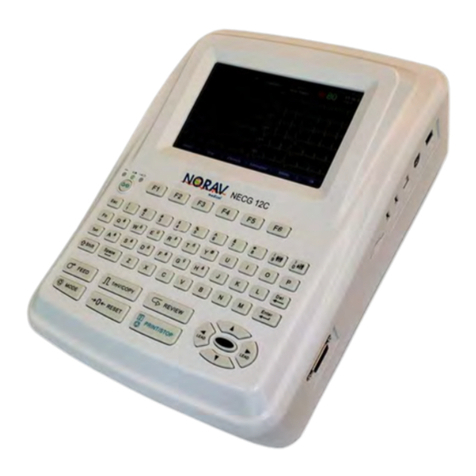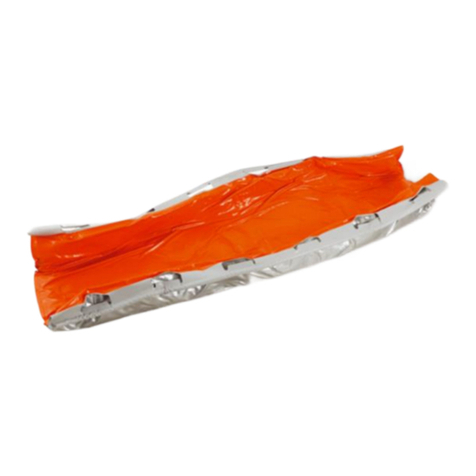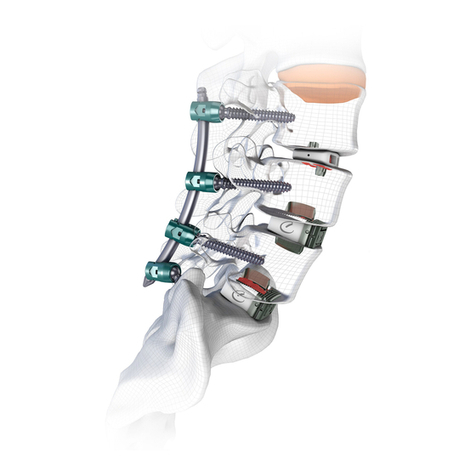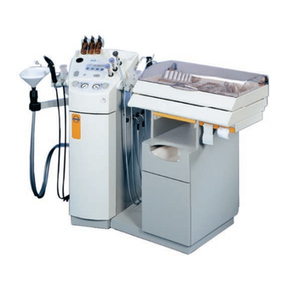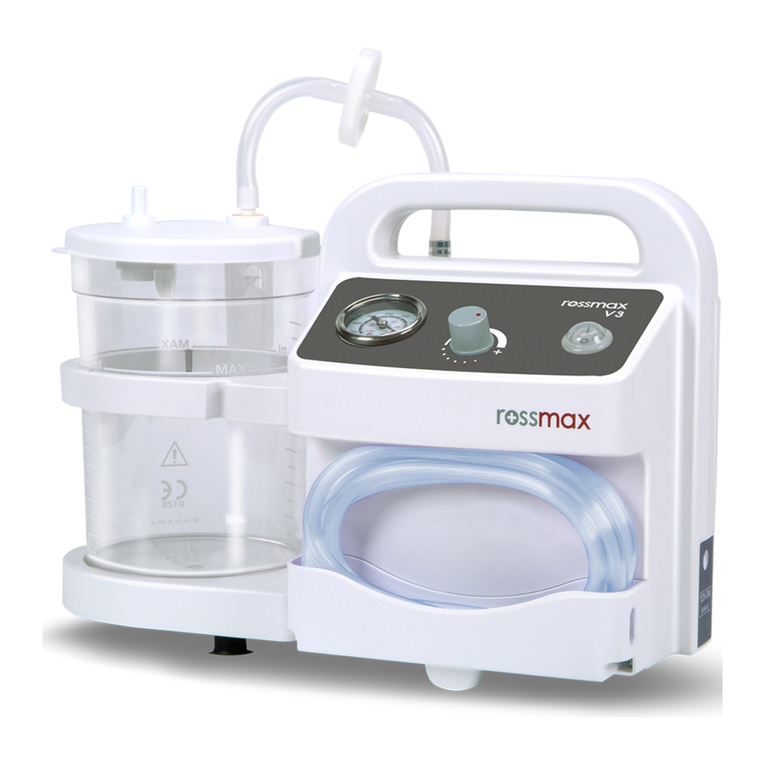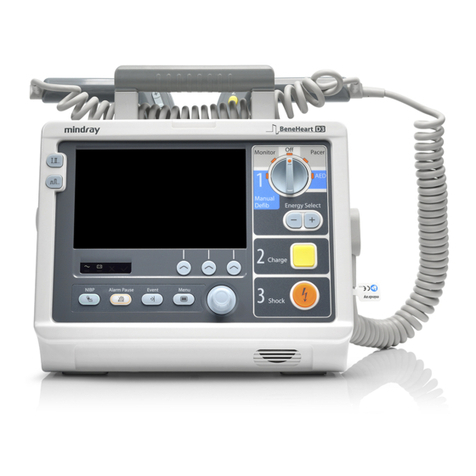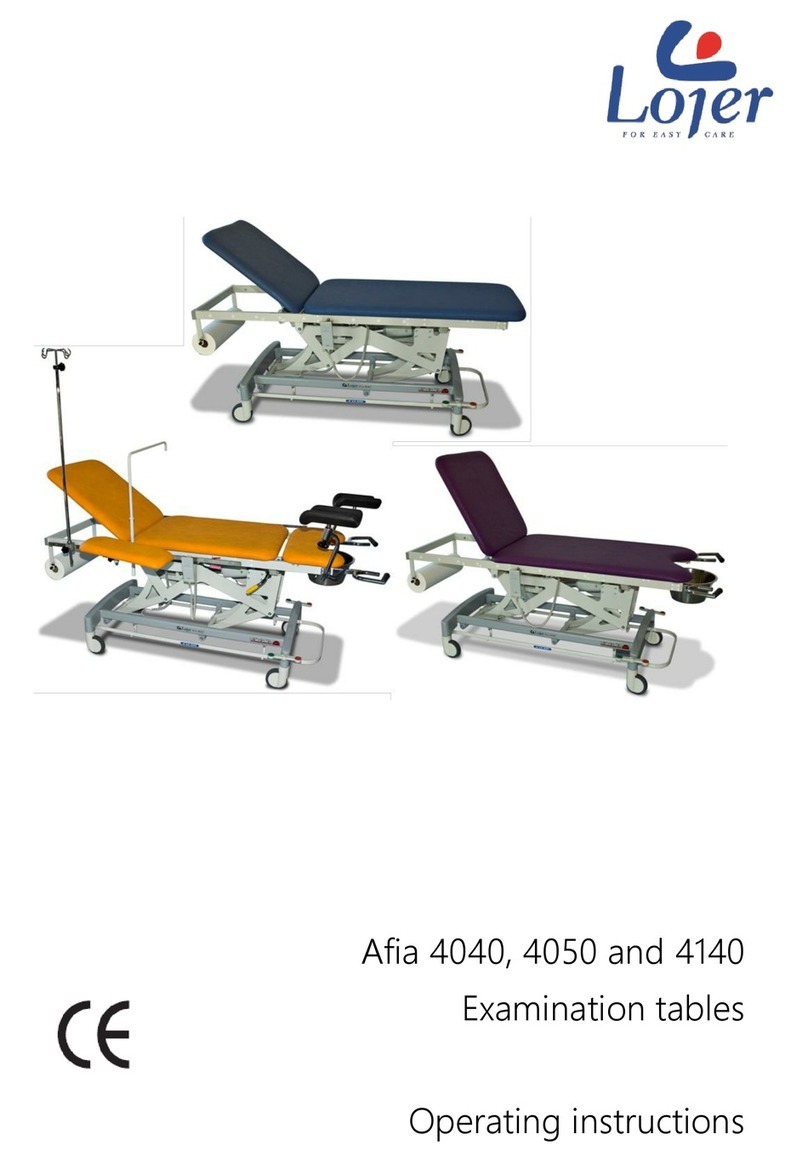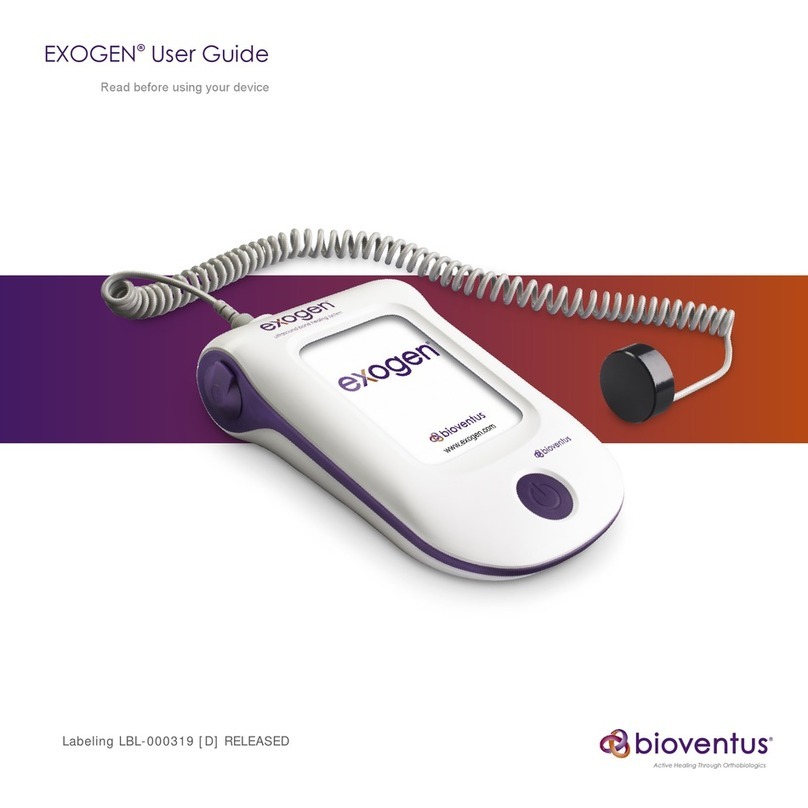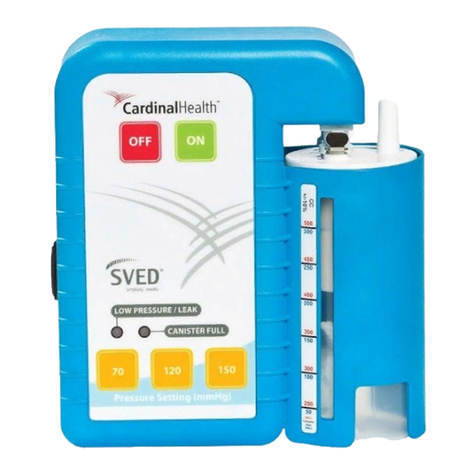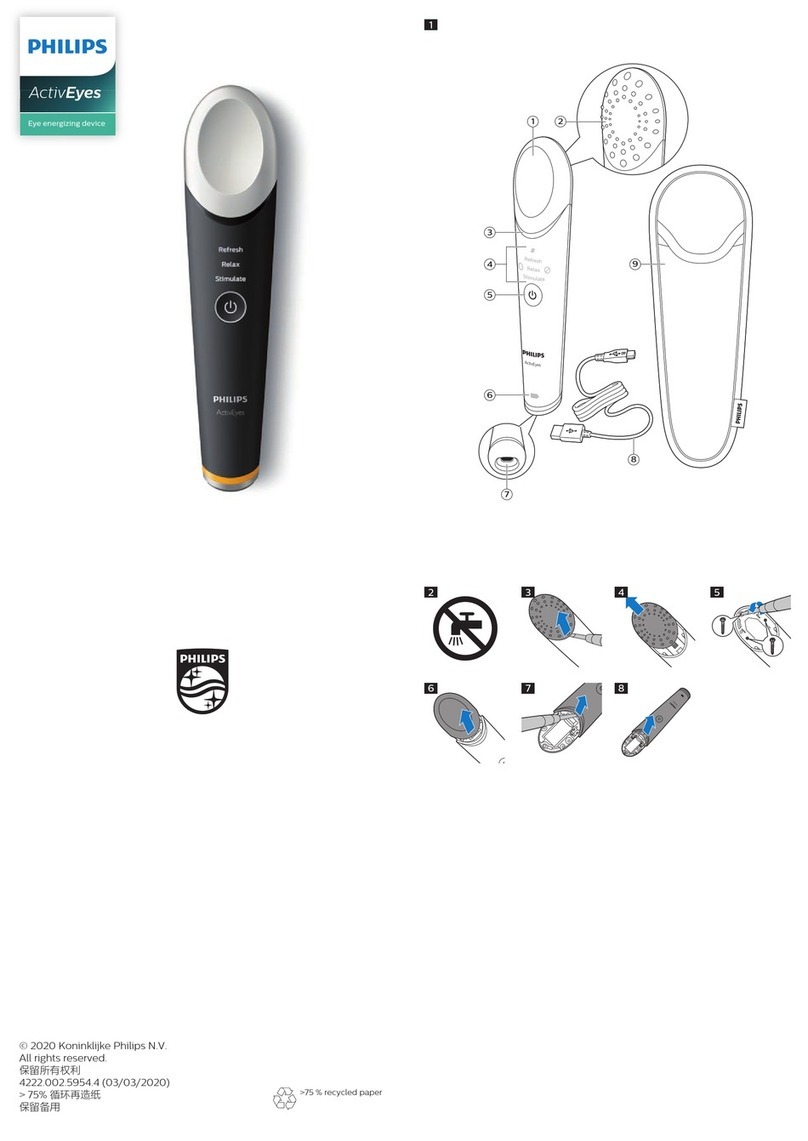Norav Medical NBP One User manual

OPERATION
MANUAL
NBP One
24-Hour Ambulatory BP Monitoring System

NBP One User Manual
Norav Medical
Changes
This manual is identified as Part number: NV-54/NBP-ONE. An updated version may be available for download
from the Norav Medical website. Should you notice errors or omissions in this manual, please notify us at:
Norav Medical
601 N. Congress Ave. Suite 105, Delray Beach FL 33445, USA.
Tel: +1 (561) 274-4242 Fax: +1 (561) 274-4252
Email: info@norav.com Web: www.noravmedical.com
This manual is for the NBP One, Ambulatory Blood Pressure Monitor (ABPM) System.
CAUTION: US Federal law restricts this device to sale by or on the order of a licensed practitioner
Copyright Information
All content in this manual is the proprietary information of Norav Medical and is provided solely for purposes of
operation, maintenance or service of the NBP One ABPM system. This manual and the NBP One ABPM system
described in it are protected under copyright law under which they may not be copied, in whole or
in part, without written consent of Norav Medical. Norav and NBP One are registered trademarks of Norav Medical,
Inc. All other trademark names are the trademarks of their respective holders. The information in this manual is
furnished for guidance only, is subject to change without notice, and should not be construed as a commitment by
Norav Medical. Norav Medical assumes no liability for errors or inaccuracies that may appear in this manual.
© 2020 Norav Medical. All rights reserved.
Manufacturer Information
SunTech Medical, Inc.
507 Airport Blvd, #117
Morrisville, NC 27560-8200
Phone: 1-919-654-2300
1-800-421-8626
Fax: 1-919-654-2301
First registered June 2015
SunTech Medical, Ltd.
Oakfield Industrial Estate
Stanton Harcourt Road
Eynsham, Oxfordshire OX29 4TS
England
Phone: + 44 (0) 1865-884-234
Fax: + 44 (0) 1865-884-235
SunTech Medical (Shenzhen) Co., Ltd. 105
HuanGuan South Road, Suite 15 2~3/F
DaHe Community Guanlan,
LongHua District, Shenzhen
GuangDong PRC 518110
Tel: + 86-755-29588810
+ 86-755-29588986 (Sales)
+ 86-755-29588665 (Service)
Fax: + 86-755-29588829

NV-54/NBP-ONE Rev: 201021 Page 3of 35
Table of Contents
CHANGES ................................................................................................................................................................................ 2
COPYRIGHT INFORMATION ......................................................................................................................................................... 2
MANUFACTURER INFORMATION .................................................................................................................................................. 2
TABLE OF CONTENTS ................................................................................................................................................................. 3
INTRODUCTION TO AMBULATORY BLOOD PRESSURE MONITORING ........................................................................... 4
SYMBOLS USED IN LABELING....................................................................................................................................................... 5
OVERVIEW ............................................................................................................................................................... 7
INDICATIONS FOR USE ............................................................................................................................................................... 7
DEVICE OPERATION .................................................................................................................................................................. 7
PRODUCTS AND ACCESSORIES ..................................................................................................................................................... 8
BIOCOMPATIBILITY AND APPLIED PARTS ........................................................................................................................................ 8
SPECIFICATIONS ....................................................................................................................................................................... 9
SAFETY AND EFFECTIVENESS CONSIDERATIONS ............................................................................................................................. 10
DISPOSAL .............................................................................................................................................................................. 10
POTENTIAL ADVERSE REACTIONS ............................................................................................................................................... 10
CAUTIONS FOR USE ................................................................................................................................................................. 10
WARNINGS ........................................................................................................................................................................... 11
CAUTIONS ............................................................................................................................................................................. 12
CONTRAINDICATIONS .............................................................................................................................................................. 13
NBP ONE AT A GLANCE............................................................................................................................................. 14
SETTING UP THE NBP ONE SYSTEM........................................................................................................................................... 15
POWERING THE NBP ONE FOR USE ........................................................................................................................................... 15
CONNECTING THE NBP ONE TO THE PC ..................................................................................................................................... 1
COMMUNICATING WITH THE NBP ONE ...................................................................................................................................... 1
CONDUCTING AN AMBULATORY BLOOD PRESSURE STUDY ........................................................................................ 17
PROGRAMMING THE NBP ONE FOR AN ABP STUDY ..................................................................................................................... 17
FITTING A PATIENT WITH THE NBP ONE AND ABPM CUFF ............................................................................................................ 17
PREPARING AND EDUCATING THE PATIENT .................................................................................................................................. 19
STARTING THE STUDY .............................................................................................................................................................. 19
FINISHING THE STUDY.............................................................................................................................................................. 20
NOTES ON BLOOD PRESSURE DATA .......................................................................................................................... 20
RETRIEVING DATA FROM THE ABP MONITOR ............................................................................................................................... 20
REVIEWING AND EDITING AN ABP STUDY ................................................................................................................. 21
VIEWING AN AMBULATORY BLOOD PRESSURE STUDY .................................................................................................................... 21
REVIEWING AN AMBULATORY BLOOD PRESSURE STUDY ................................................................................................................. 24
CREATING REPORTS ................................................................................................................................................. 25
CONFIGURING AND CUSTOMIZING THE REPORT ............................................................................................................................ 25
PREVIEWING AND PRINTING THE REPORT .................................................................................................................................... 25
MANAGING PATIENT STUDIES .................................................................................................................................. 25
EXPORTING A PATIENT STUDY ................................................................................................................................................... 25
EMAILING A PATIENT STUDY ..................................................................................................................................................... 25
EVENT CODES .......................................................................................................................................................... 26
MAINTAINING AND CLEANING THE NBP ONE ............................................................................................................ 27
MAINTENANCE AND REPAIRS AFTER USE .................................................................................................................................... 27
CALIBRATION VERIFICATION PROCEDURE .................................................................................................................................... 28
LIMITED WARRANTY ................................................................................................................................................ 29
TECHNICAL ASSISTANCE............................................................................................................................................ 29
RADIO FRE UENCY COMPLIANCE RE UIREMENTS .................................................................................................... 30
ELECTROMAGNETIC COMPATIBILITY SYSTEM RE UIREMENTS ................................................................................... 31
PRODUCT DISPOSAL ................................................................................................................................................. 34
REFERENCES ............................................................................................................................................................ 35

NBP One User Manual
Norav Medical
Introduction to Ambulatory Blood Pressure Monitoring
Ambulatory blood pressure monitoring (ABPM) is an accepted clinical tool for collecting multiple blood pressure
measurements. ABPM data is intended to better assist clinicians with the diagnosis and management of
hypertension by providing data related to: blood pressure variability, estimation of true blood pressure, overnight
changes in blood pressure, blood pressure load, sleep blood pressure dipping, and morning surge in blood pressure.
In-clinic and home blood pressure measurements cannot provide the same depth of information that a 24-hour
study provides. Several studies have shown that ambulatory blood pressure monitoring, when compared to clinic or
home blood pressure measurement, is superior in predicting target organ damage, morbid events, or cardiovascular
risk.
The data obtained from ambulatory blood pressure monitors is accurate and useful for managing a wide variety of
hypertensive situations including:
•White-coat hypertension
•Resistant hypertension
•Masked hypertension
•Childhood hypertension
•Efficacy of anti-hypertensive drug therapy on a 24-hour basis
•Nocturnal hypertension
•Episodic hypertension and/or anxiety disorders
•Hypotensive symptoms
•Changes in diet and daily routine designed to reduce hypertension

Introduction to Ambulatory Blood Pressure Monitoring
NV-54/NBP-ONE
Rev:
201021
Page 5of 35
Symbol
Description
Standard/Source
Caution
ISO 7000
-
0434A
Authorized representative in the European Community
ISO 15223
-
1
Consult Instructions for Use
ISO 7000
-
1641
Disposal in compliance with WEEE Directive
WEEE
EU Directive
This product meets the requirements of the applicable
Directives
USB Industry
Refer to Instruction Manual ISO 7010-M002
Batch Code ISO 7000-2492
Symbols Used in Labeling
General Warning Sign ISO 7010-W001
This product is Type BF defibrillator protected IEC 60417-5334
Date of Manufacture
ISO 7000
-
2497
CAUTION:
Federal (U.S.A.) law restricts this device to sale by
or on the order of a physician
FD
Arrow should be placed over artery
Manufacturer
Index line
Manufacturer
Not made with PVC
Manufacturer
Manufacturer ISO 7000-3082
Reference Number ISO 7000-2493
Not made with natural rubber latex Manufacturer
Symbol indicating limb circumference Manufacturer
Cuff index line must fall within range markings Manufacturer
Serial Number ISO 7000-2498

NBP One User Manual
Norav Medical
Shipping and storage humidity should be kept between 15% to
95%
Shipping and storage temperature should be kept between
-20˚ C to 70˚C
This product and its shipping container should be kept dry
ISO 7000
-
2620
ISO 7000-0632
ISO 7000-0626
Start/Stop a BP measurement Manufacturer
Fragile, handle with care ISO 7000-0621

Overview
NV-54/NBP-ONE Rev: 201021 Page 7of 35
Overview
Indications for Use
The NBP One System is a non-invasive oscillometric ambulatory blood pressure monitor that is intended to be used
with NEMS Software for the recording and displaying of up to 250 measurements of systolic and diastolic blood
pressure and heart rate. It is intended for use as an aid or adjunct to diagnosis and treatment when it is necessary to
measure an adult and pediatric (> 3yrs.) patient’s systolic and diastolic blood pressures over an extended period of
time. The system is only for measurement, recording, and display to assist a licensed physician in making a
diagnosis.
Device Operation
The NBP One monitor is worn by the patient on a waist belt and is connected to a cuff around the non- dominant
upper arm. The cuff is inflated automatically at intervals which can be programmed during setup. Blood pressure is
measured by the oscillometric method which senses pressure waves in the artery when occluded by pressure in the
cuff. Heart rate is determined by the frequency of the pressure waves detected.
Blood pressure measurements determined with this device are equivalent to those obtained by a trained observer
using the cuff/stethoscope auscultation method, within the limits prescribed by the American National Standard,
Electronic or Automated Sphygmomanometers . The Korotkoff sounds heard over the artery below the compression
cuff vary in character as the pressure in the cuff is reduced from above systolic toward zero, or atmospheric pressure.
They are divided into phases. Phase 1 (K1) or systolic begins with the sudden appearance of a faint, clear tapping or
thumping sound that gradually increases in intensity. Phase 5 (K5) or diastolic begins when silence develops, and
was used to determine overall efficacy of the NBP One.
The NBP One meets or exceeds all requirements for validation by the International Protocol of the European Society
of Hypertension (ESH) and the British Hypertension Society (BHS) and ISO 81060-2. To obtain results of these
studies please send a written request to:
Norav Medical
601 N. Congress Ave. Suite 105, Delray Beach FL 33445, USA
or visit the manufacturer website to review the abstracts: www.noravmedical.com

NBP One User Manual
Norav Medical
Products and Accessories
The NBP One System should contain the following items. If you are missing any item, please contact Norav Medical
immediately (see Limited Warranty for contact information).
NBP One ABPM System (Included Accessories)
Item Description Part Number
NBP One ABP Monitor NBP-ONE-D-00-01
NBP One Software Installation Media SW-DOK-NBP-ONE-01
USB Cable C-USB-NBP-ONE-01
ABP Monitor Belt NBP-ONE-BELT-01
ABP Monitor Shoulder Strap NBP-ONE-STRAP-01
ABP Monitor Pouch NBP-ONE-POUCH-01
ABPM Cuff, Size 2 (26cm-34cm) NBP-ONE-CUFF-1-02
ABPM Cuff, Size 3 (32cm-44cm) NBP-ONE-CUFF-1-03
ABPM Air Hose NBP-ONE-HOSE-01
NBP One ABPM Optional Accessories
ABPM Cuff Size 1 (18-26 cm) NBP-ONE-CUFF-1-01
ABPM Cuff, Size 4 (42cm-55cm) NBP-ONE-CUFF-1-04
Biocompatibility and Applied Parts
The ABPM cuff is the only Applied Part (AP) of the NBP One system. All AP have been evaluated for
biocompatibility in conjunction with the applicable standards.
Item Description
Part Number

Overview
NV-54/NBP-ONE Rev: 201021 Page 9of 35
Specifications
Blood Pressure Range Systolic: 40-260 mmHg
Diastolic: 25-200 mmHg
Heart Rate Range 40-200 bpm
Maximum Inflate
Pressure
280 mmHg
Accuracy Heart Rate accurate within +/-2% or +/-3 bpm, whichever is greater. Blood Pressure
results meet or exceed ANSI/AAMI/ISO 81060-2:2013 standards for non- invasive
accuracy:
±5 mmHg mean error & 8 mmHg standard deviation.
Validations Clinically validated to ESH International Protocol, BHS (A/A), and ANSI/AAMI/ISO
81060-2:2013
Operating Conditions
Shipping/Storage
Conditions
10°C (50°F) to 50°C (122°F)
20-95% RH non-condensing
-20°C (°F) to 70°C (°F)
15-95% RH non-condensing
Classification Continuous operation
Power: Two (2) AA batteries, alkaline Data
Data Memory Flash memory stores up to 250 readings
Calibration Check
Recommendation
Minimally, once every two years
Safety Systems Maximum inflation pressure limited to 300 mmHg; Auto safety release valve for
power failure; Maximum measurement time limited to less than 140 seconds
Sampling Periods 24 independently programmable time periods (Time interval options: none, 5, 10, 15,
20, 30, 45, 60, 90, and 120 minutes)
Safety AAMI/ANSI ES60601-1:2005/(R) 2012
+A1:2012
EN 60601-1 :2006/A1:2013/ IEC
60601-1: 2005/A1:2012
Blood Pressure IEC 80601-2-30 :2009 + A1:2013 N/A
Usability IEC 60601-1-6 :2013 Ed. 3.1
IEC 62366:2015 Ed. 1.0
EN 60601-1-6 :2010
EN 62366:2008
EMC/EMI/ESD IEC60601-1-2:2014 EN 60601-1-2:2015
Home Use IEC 60601-1-11:2015 Ed. 2.0 EN IEC 60601-1-11:2010
Biocompatibility ISO 10993-1:2009/(R)2013
ISO 10993-5:2009
ISO 10993-10:2010
EN ISO 10993-1:2009/AC:2010
EN ISO 10993-5:2009
N/A
Symbols ISO 15223-1:2016 EN ISO 15223-1:2016
Sphygmomanometers ANSI/AAMI/ISO 81060-2:2013 EN ISO 81060-1:2012
Quality ISO 13485:2016 EN ISO 13485:2016
Risk Management ISO 14971:2007 (Ed. 2) EN ISO 14971:2012
Size Approximately 100 x 70 x 30 mm
Weight Approximately 233 g, including batteries
Storage Conditions -20° C to +70° C, 15%-95% RH non-condensing
Data USB 3.0 (USB-C)
Parameter Standard EU Norm
Met od of

NBP One User Manual
Norav Medical
Safety and Effectiveness Considerations
The following safety and effectiveness issues are to be considered prior to the usage of the NBP One monitor.
NOTE: This device is defibrillator protected No precautions specific to the NBP One are required during defibrillation,
and defibrillation discharge has no effect on the NBP One.
•The monitor is intended for use following consultation and instruction by a physician.
•The reliability of the device is dependent upon conformance with the operation and service
instructions, as detailed in this manual.
•This device has been designed for use on patients with normal sinus rhythms.
•The interpretation of blood pressure measurements should only be made by a physician. The accuracy of
any blood pressure recording may be affected by the position of the subject, his or her physical condition,
and use outside the operating instructions detailed in this manual.
Disposal
This symbol indicates that the monitor contains materials which may be hazardous to human health. This product
complies with the WEEE Directive. Please return the NBP One monitor to Norav Medical for proper disposal.
Please dispose of other materials according to local regulations.
Potential Adverse Reactions
Allergic exanthema (symptomatic eruption) in the area of the cuff may result, including the formation of urticaria
(allergic reaction including raised edematous patches of skin or mucous membranes and intense itching) caused by the
fabric material of the cuff.
Petechia (a minute reddish or purplish spot containing blood that appears in the skin) formation or Rumple-Leede
phenomenon (multiple petechia) on the forearm following the application of the cuff, which may lead to Idiopathic
thrombocytopenia (spontaneous persistent decrease in the number of platelets associated with hemorrhagic
conditions) or phlebitis (inflammation of a vein) may be observed.
Cautions for Use
This monitor is designed to perform in conformity with the description thereof contained in this operation manual
when operated, maintained and repaired in accordance with the instructions provided. The monitor should not be
modified in any way. Ensure pressure compatibility to all patients. If any abnormality occurs in the monitor, suspend
the operation immediately and disconnect it from the patient. If the monitor has been used or stored outside its
acceptable range (see Specifications page), it may not meet performance specifications. If the cuff fails to deflate, the
patient should be instructed on its proper and safe removal.

Overview
NV-54/NBP-ONE
Rev:
201021
Page 11 of 35
Warnings
The general warning sign indicates a potentially hazardous situation which could result in serious injury.
WARNING: Do not use in the presence of flammable anesthetics; this could cause an explosion. This device is not
suitable for use in an oxygen enriched environment.
WARNING: Do not immerse the monitor in any fluid, place fluids on top, or attempt to clean the monitor with
any liquid detergents, cleaning agents, or solvents. This may cause an electrical hazard. Do not use the monitor if
accidental wetting occurs; please return to Norav Medical (see Limited Warranty). Refer to Maintaining and
Cleaning the NBP One ABP System, for care instructions.
WARNING: Too frequent measurements can cause injury to the patient due to blood flow interference.
WARNING: The cuff should not be applied over a wound as this can cause further injury.
WARNING: The cuff should not be placed on the arm on the side of a mastectomy. In the case of a double mastectomy
use the side of the least dominant arm.
WARNING: Pressurization of the cuff can temporarily cause loss of function of simultaneously used monitoring
equipment on the same limb.
WARNING: Do not use if device is dropped and/or is damaged. Have a qualified service representative check the
monitor before using again.
WARNING: Do not attach the cuff to a limb being used for IV infusions or any other intravascular access, therapy or
an arterio-venous (A-V) shunt. The cuff inflation can temporarily block blood flow, potentially causing harm to the
patient.
WARNING: Use only with the cuffs supplied by Norav Medical. Different cuffs have not been validated with NBP
One and measurements with non-validated components may not be accurate
WARNING: Use of an ACCESSORY, transducer or cable with ME EQUIPMENT and ME SYSTEMS other than
those specified may result in increased EMISSIONS or decreased IMMUNITY of ME EQUIPMENT or ME
SYSTEM.
WARNING: The NBP One may be interfered with by other equipment even if the other equipment complies with
CISPR Emission Requirements.
WARNING: Performance can be affected by extremes of temperature, humidity and altitude.
WARNING: Do not use the monitor during magnetic resonance imaging (MRI) or in an MRI environment.

NBP One User Manual
Norav Medical
Cautions
The caution symbol indicates a potentially hazardous situation which may result in minor or moderate injury. It may
also be used to alert against unsafe practices.
CAUTION: When downloading data from the monitor’s communications USB port, the device should not be in use
with a patient.
CAUTION: Do not remove monitor covers, except to replace batteries. The monitor does not contain any user
serviceable components. Return monitor if service is required.
CAUTION: Do not use on neonates, pediatric patients less than 3 years old, or patients known to be readily susceptible
to bruising.
CAUTION: Do not use the monitor if it has failed its diagnostic self test, or if it displays a greater than zero pressure
with no cuff attached. The values displayed by such a monitor may be inaccurate.
CAUTION: Substitution of a component different from that supplied may result in measurement error. Repairs
should be undertaken only by personnel trained or authorized by Norav Medical.
CAUTION: The NBP One does not contain any user serviceable internal parts and should only be repaired by an
authorized Norav Medical service representative. Do not service the product while in use.
CAUTION: If cuff fails to deflate within two and a half minutes, instruct patient on manual removal of cuff.
CAUTION: Check that operation of the monitor does not result in prolonged impairment of the circulation of the
patient.
CAUTION: Remove batteries when device is not in use for long periods of time to prevent possible battery leakage and
product damage.
CAUTION: A compressed or kinked connection hose may cause continuous cuff pressure resulting in blood flow
interference and potentially harmful injury to the patient.
CAUTION: Using an incorrect cuff size could result in erroneous and misleading blood pressure measurement
results.
CAUTION: Do not machine wash the cuff bladder.
CAUTION: On hypotensive patients, the device should be used with caution.

Overview
NV-54/NBP-ONE
Rev:
201021
Page 13 of 35
Contraindications
The NBP One ABPM system should be used in conjunction with all other available medical histories and
diagnostic test information about the patient. The following are reasons to withhold use of the NBP One ABPM
system from a patient:
CONTRAINDICATION: Do not use on patients with erratic, accelerated or mechanically controlled irregular heart
rhythms, including patients with arrhythmias.
CONTRAINDICATION: Do not use on patients with carotid or aortic valve stenosis.
CONTRAINDICATION: The system is not applicable in generalized constriction or localized spasm of muscular
conduit arteries such as seen immediately after hypothermic cardiopulmonary bypass surgery or accompanying
Raynaud's phenomena or intense cold.
CONTRAINDICATION: Do not use system on patients who have had a double mastectomy
CONTRAINDICATION: Do not use on the same arm of patients with a peripherally inserted central catheter (PICC)
line, Intraveneous (IV) or arterial line.

NBP One User Manual
Norav Medical
NBP One At a Glance
Device
Figure 1: NBP One device
1. Start/Stop Button
To Power On:
Press the Start/Stop button.
To Power Off:
When not taking a reading, press and HOLD the Start/Stop button until you hear 8 beeps (approx. 5 seconds), then
release.
To Abort a Measurement:
Press the Start/Stop button any time during a reading.
To Start a Programmed ABP Study:
When time is flashing, press the Start/Stop button to take 1st reading.
To Start a Manual BP Reading:
When clock is displayed, press the Start/Stop button.
2. Male bayonet NIBP connector
3. Event Marker
4. Day/Night Button
Display
Figure 2: LCD screen
1. Time - Shown when the monitor is not taking a reading.
2. Battery - Indicates low battery; REPLACE BATTERIES.
3. Clock - ABP study in progress.
4. Sun - Indicates AWAKE portion of study.
5. Moon - Indicates ASLEEP portion of the study.
6. BP Reading - During a reading, displays the pressure of the cuff in mmHg or kPa. Immediately after a reading, shows
the BP results in mmHg or kPa followed by heart rate in beats per minute.
7. Readings Symbol - Indicates number of BP readings in memory.
8. Measurement unit - indicates the unit of the displayed value in mmHg or kPa (blood pressure) or beats per minute
(heart rate)

NBP One At a Glance
NV-54/NBP-ONE
Rev:
201021
Page 15 of 35
Button Functionality
Display Symbols Description
Time 10:45 Indicates current time. When flashing, the monitor will turn off in 20 seconds unless an ABPM study
is in progress.
Pressure 75 mmHg Indicates the pressure of the cuff in mmHg during a measurement.
Reading
Result
120/80
mmHg
Immediately after a measurement is complete, the display shows the results, if enabled. BP in
mmHg is shown first, followed by HR in beats per minute.
Clock Denotes that a programmed ABP study is in progress.
Sun Denotes the monitor is collecting readings according to the AWAKE program of the study.
Battery Indicates low battery voltage; BATTERIES NEED TO BE REPLACED.
Setting Up The NBP One System
Setting up the NBP One System involves powering the NBP One, installing NEMS Software on a personal computer
(PC), and connecting the NBP One to the PC.
The NBP One ABPM system is packaged with everything you need to start. See Product and Accessories for
complete contents.
Powering the NBP One for Use
Install two (2) AA batteries in the bay located at the back of the monitor. The bay shows the orientation in which the
batteries should be placed. When batteries are properly loaded, the monitor’s display will show the following:
1. Incrementing dashes
2. Software and safety version of the monitor
3. Battery voltage followed by three quick audible beeps
4. The number of BP readings in memory followed by one long audible beep
5. Time flashing
The monitor is now ready to be used.
NOTE: Ensure batteries are inserted with the correct polarity. Improper installation will prevent the monitor from
functioning. Batteries are required for NBP One use at all times including programming, scheduling and retrieving.
Save Symbol Indicates the number of readings in memory.
Event
Marks an event.
Day/Night Toggles between day (AWAKE) mode and night (ASLEEP) mode.
TO POWER ON: Press the Start/Stop button.
TO POWER OFF: When the monitor is not taking a measurement, press and hold the Start/ Stop
button until you hear five quick beeps, then release.
TO STOP A MEASUREMENT IN PROGRESS: Press the Start/Stop button.
TO START A PROGRAMMED STUDY: When the time is flashing, press the Start/Stop button.
TO START A SINGLE BP READING: When the time is displayed, press the Start/Stop button.
Start/Stop
Moon Denotes the monitor is collecting readings according to the ASLEEP program of thestudy.

NBP One User Manual
Norav Medical
NOTE: Install batteries before connecting NBP One to PC via USB.
NOTE: Device will not re-charge batteries via USB connection.
CAUTION: Remove batteries when device is not in use for long periods of time to prevent possible battery leakage and
product damage.
Connecting the NBP One to the PC
NOTE: Install the NEMS software before connecting the USB cable to the computer.
1. Connect the USB cable to the USB connector on the ABP monitor.
2. Connect the USB end of the cable to the USB port on your PC.
Figure 3: Connecting the NBP One to a PC
NOTE: The cable can be left connected when the PC is off and the monitor is not connected to a patient.
Communicating with the NBP One
To successfully complete an ambulatory blood pressure (ABP) study: Connect the NBP One to the PC then
program the study in the NEMS application from your PC. When the patient returns you will again use the NEMS
application on your computer to retrieve the collected data.

Conducting an Ambulatory Blood Pressure Study
NV-54/NBP-ONE Rev: 201021 Page 17 of 35
Conducting an Ambulatory Blood Pressure Study
Programming the NBP One for an ABP Study
Preparing the monitor for an ABP study involves filling out an on-screen form to set the parameters for your study to
be programmed into the monitor.
Figure 4: Programming the NBP One
To program t e monitor:
1. From the Patients window main menu click New Test, select ABPM test type.
2. Enter the desired parameter settings.
3. Click one of the following:
•Send to Device to transfer the information to the NBP One.
•OK to close and save the current parameters as default for next study.
•Cancel to close without change the default parameters.
Fitting a Patient with the NBP One and ABPM Cuff
After you have successfully programmed the NBP One using NEMS software, you may begin fitting the patient with the
monitor and a blood pressure cuff. Cuffs may be used on either arm.
1. Choose the proper cuff size
To determine the correct cuff size for your patient, wrap the cuff around the patient’s upper arm without sliding the
arm through the sleeve. Use the color- coded RANGE indicator on the inside of the cuff and the bold INDEX marker
to check that the arm circumference falls within the cuff range. If the arm is within range, this cuff size is correct for
your patient. If the marker is outside the RANGE indicator, select a new cuff size as indicated by color.

NBP One User Manual
Norav Medical
CAUTION: Using an incorrect cuff size could result in erroneous and misleading blood pressure measurements.
2. Apply the ABPM cuff
To apply the ABPM cuff, simply slide the sleeve up the patient’s arm, ensuring the color size indicator is at the top of the
cuff. The cuff should be midway between the elbow and shoulder. Be sure the ARTERY indicator
is over the patient’s brachial artery, between the bicep and tricep muscles. Wrap the cuff snugly around the patient’s
upper arm. There should be space for approximately 1 finger underneath the bottom of the cuff.
Figure 5: Instructions for Applying the ABPM Cuff
3. Connect the BP hose to the device and the cuff
Connect the BP hose to the NBP One monitor and to the cuff by pushing the fittings together until it is locked into
place. The hose can be released by pulling the female fitting away from the male connection. Drape the hose over the
patient’s shoulder, behind the neck and across to the opposite side of the body.
4. Attach to patient
Insert the NBP One into its pouch with the display showing through the window. Attach the pouch to the patient
using the belt.
Figure 6: Fitting the ABPM Cuff to the Patient

Conducting an Ambulatory Blood Pressure Study
NV-54/NBP-ONE Rev: 201021 Page 19 of 35
Preparing and Educating the Patient
When conducting blood pressure measurements, with an oscillometric NIBP device, it is important to follow suitable
procedures to ensure valid, accurate results. Preparing your patient for the ABP study is the most important step to
achieving a successful test. Review the following instructions with your patient.
•
When the pressure in the cuff increases, the patient must avoid excess movement during
measurements. Let the cuffed arm hang loosely, slightly away from the body with the middle of the
cuff at heart level. Avoid flexing the muscles or moving the hand and fingers of the cuffed arm.
•
The patient can stop a measurement in progress by pressing the Start/Stop button
momentarily.
•
If the Manual Readings setting is on, the patient can start a measurement at any time by
pressing the Start/Stop button momentarily.
•
The cuff should not be removed between BP measurements.
•
Before sleeping, the patient should make sure that the hose is not kinked and will not become kinked.
•
The batteries can be replaced during a study without the data being lost or interrupting the
monitor’s program. Alternatively, the monitor can be turned off without losing its data.
•
Instruct the patient on how and when to fill out the patient diary.
•
If the Day/Night button is on, instruct the patient on how to set day and nightmodes.
•
If Event Marking is on, instruct the patient on how and when to mark events.
•
Ensure the patient knows how to care for the monitor. Keep the monitor dry and do not dropit.
•
If the monitor or cuff causes extreme pain, or pain not normally associated with blood pressure
measurement, the patient should remove the cuff and turn off the monitor.
•
The patient should not talk during BP measurements. The patient should be seated, standing or lying
down. If seated, the patient should have legs uncrossed, feet flat on the floor with back and arms
supported.
Starting the Study
Before the patient leaves with the monitor and cuff, verify that the monitor operates correctly. To verify proper
monitor operation, ensure that the monitor is on and start a BP reading by pressing the Start/Stop button.
The cuff will inflate and complete the BP measurement. The cuff will then be fully deflated. The clock icon should
appear on the display of the NBP One indicating that the study is in progress. If problems occur, review the setup and
fitting of the system.
Replace the batteries (2 AA alkaline batteries) for every study with new batteries. Failure to do so may result in
incomplete 24-hour studies.
To record an event:
Press the Event button
The monitor sounds a long audible beep for confirmation, and "rcd : 01" appears on the display (Subsequent
recordings use 02, 03, and so on). The monitor can record up to 30 events. If the patient tries to record more than 30
events, the monitor beeps four times, and "No rcd" appears on the display.
Note: If Event Marking is enabled, then the Dosage Response feature will be disabled.

NBP One User Manual
Norav Medical
To manually set day (Awake) or nig t (Asleep) mode:
Press the Day/Night button.
The monitor beeps and displays either the sun or moon icon depending on the mode that it was switched to. If
switching to Night mode, the monitor will display a moon icon.
If switching to Day mode, the monitor will display a sun icon.
Finishing the Study
If you wish to finish the study before the patient returns, instruct the patient to turn off the monitor by holding down
the Start/Stop button for five (5) seconds. The NBP One will beep five (5) times and the display will turn off.
When the patient returns, take the cuff, monitor, and belt off and download the captured data to NEMS Software for
review.
Notes on Blood Pressure Data
Any blood pressure reading can be affected by the measurement site, the position of the patient, motion, or the
patient’s physiologic condition. Environmental or operational factors which can affect the performance of the device
and/or its blood pressure reading are common arrhythmias such as atrial or ventricular premature beats or atrial
fibrillation, arterial sclerosis, poor perfusion, diabetes, age, pregnancy, preeclampsia, renal diseases, patient motion,
trembling, and shivering.
Retrieving Data from the ABP Monitor
To retrieve the data:
1. Connect the NBP One to the computer.
2. In NEMS Software go to Devices page, click the Scan Recorder button. After scan completion, patient
information appears to confirm patient details.
3. Click Download to save the data.
4. When Download Complete message appears the BP data is saved to the NEMS database.
•click Analyze to immediately review the study.
•or click Close to review the study later.
CAUTION: If you do not retrieve data from the monitor, this data will be lost when you program it for the next study.
Table of contents
Other Norav Medical Medical Equipment manuals
Popular Medical Equipment manuals by other brands
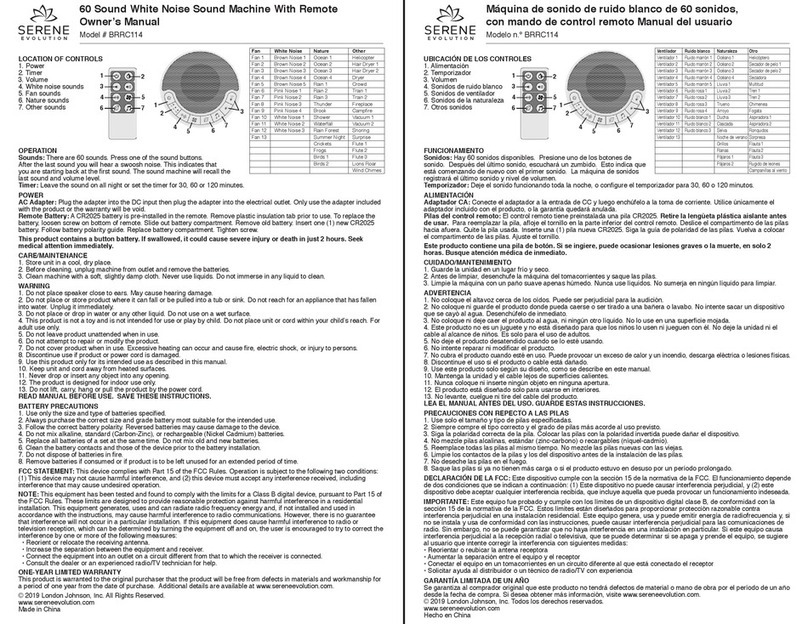
Serene Evolution
Serene Evolution BRRC114 owner's manual
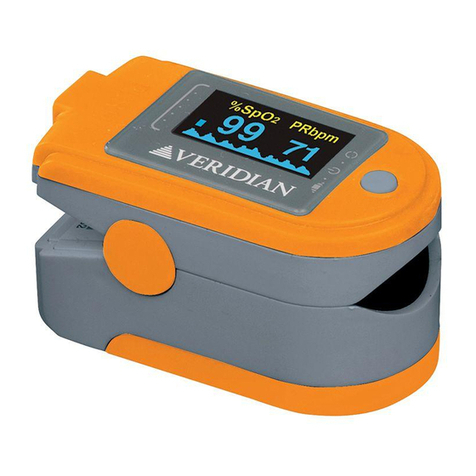
Veridian Healthcare
Veridian Healthcare 11-50DP instruction manual
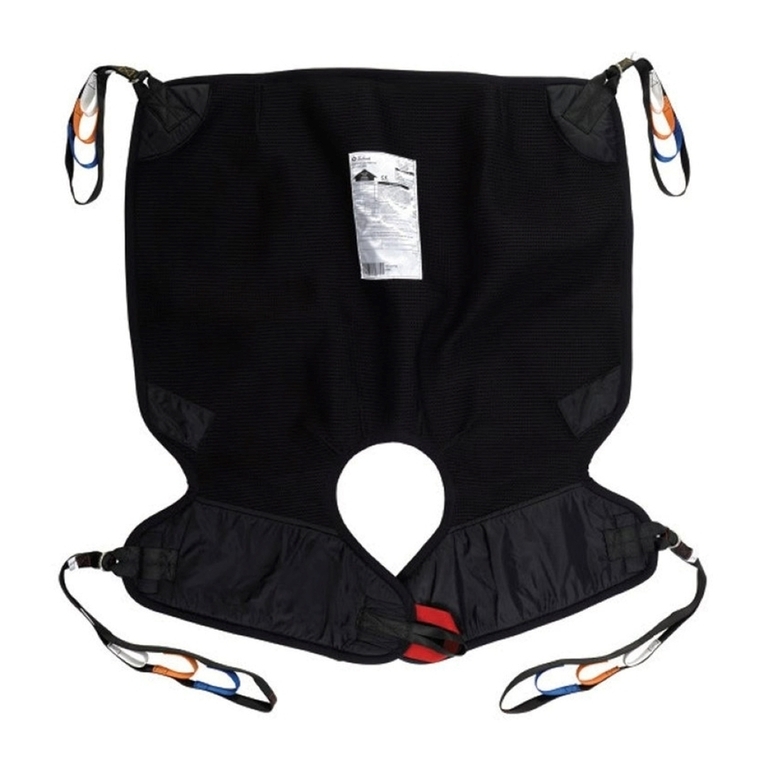
Joerns
Joerns Oxford UltraFine Deluxe User instruction manual
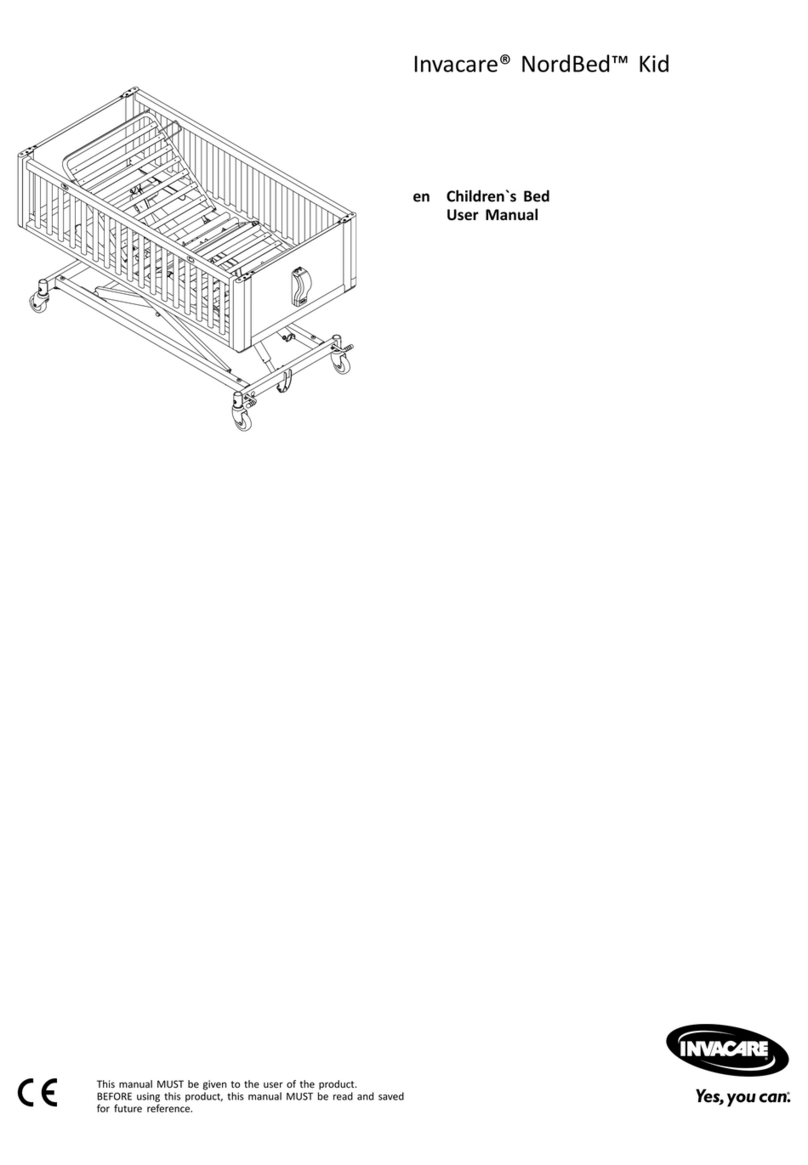
Invacare
Invacare NordBed Kid user manual

Erbe
Erbe VIO 300 D Service manual
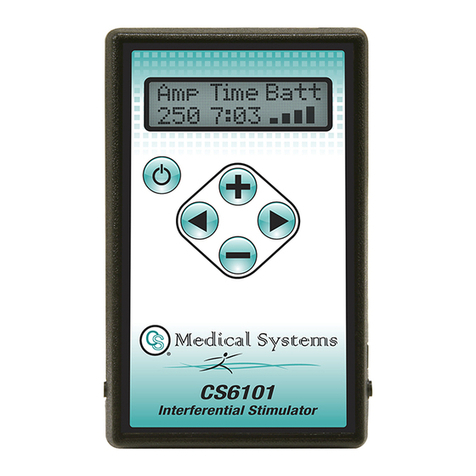
CS Medical Systems
CS Medical Systems CS6101 Patient Instruction Manual
